bluedot 2023: the importance of geological outreach
Staff members from various disciplines across BGS worked over the weekend to engage festivalgoers with BGS’s work, specifically critical raw materials.
10/08/2023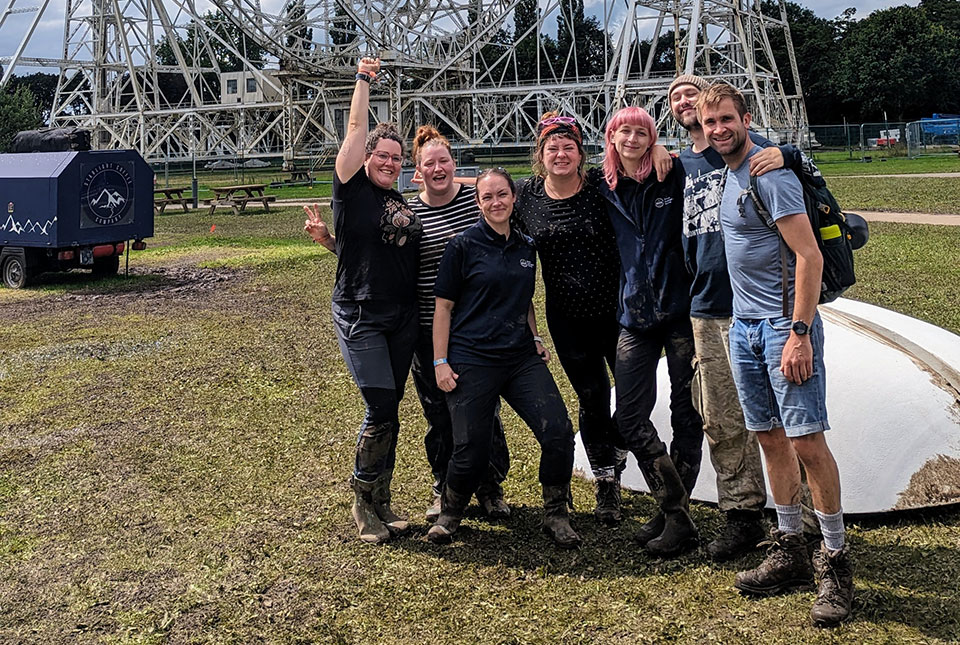
In July, six intrepid BGS adventurers and one giant tree left on a mission to revolutionise the way people think about geology. Their mission? The Future Fields area of the bluedot festival at Jodrell Bank in Cheshire.
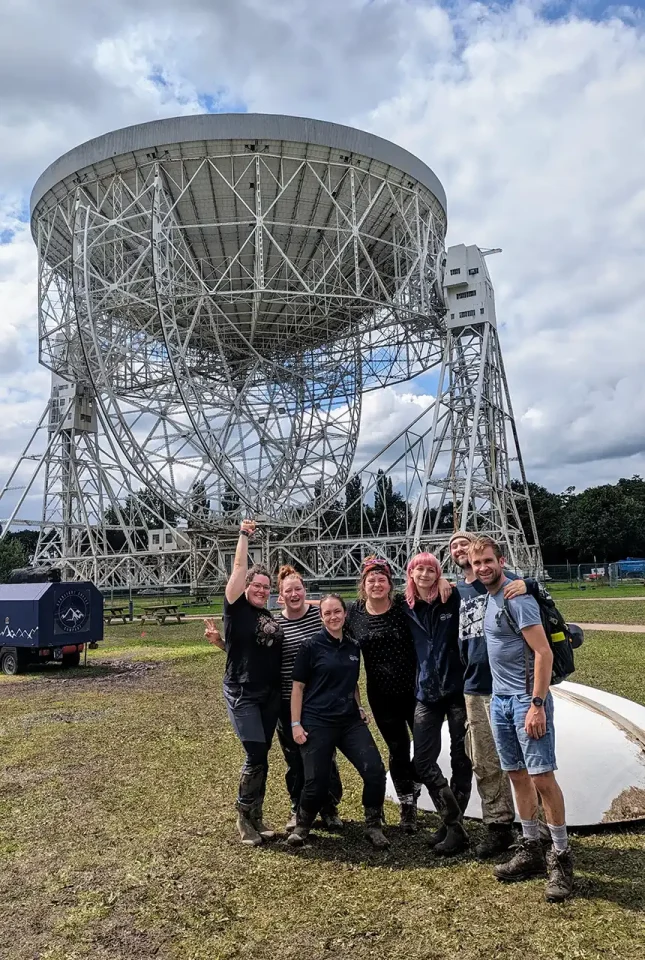
The team at bluedot. BGS © UKRI.
A matter of reputation
Most people with an interest in geology are probably aware that it has an image problem, an issue nicely illustrated in the 2023 paper, ‘“You just look at rocks and have beards”: perceptions of geology from the UK’. So it is perhaps unsurprising then that, when teachers of a local school asked children to draw an image of a geologist before BGS’s director, Karen Hanghøj, visited earlier this year the pictures largely featured older, white males — although exceptions included various creative differences, including a prosthetic leg.
The authors of the paper recommended that geologists ‘take more responsibility for supporting the development and promotion of a modern, inclusive, important and respected discipline’. This core value is recognised by BGS and, in our most recent strategy, public engagement is one of our six strategic pillars that have a fundamental, cross-cutting role in the delivery and impact of our science.
#TheCommoditree (that giant tree)
Our new public outreach tool is a three-metre-tall tree called The Commoditree, which was funded through the Critical Minerals Intelligence Centre (CMIC). It was launched at this year’s Glastonbury Festival and had its second outing at bluedot.
The interactive installation asks people to consider the critical raw materials (placed around the roots of the tree) required to make many of the commodities (found in the branches) we enjoy as part of modern life. It reminds us that items such as our electronic devices, medical equipment and cosmetics don’t just grow on trees. (Plus, Commoditree is a great pun.)
The Commoditree wasn’t the only focus of the stand, however, although the critical raw materials theme remained. When festivalgoers stepped inside our tent they were able to see, touch and even smell an array of critical raw materials up close, as well as maps of metal extraction and deconstructed mobile phones. If they answered questions correctly they also got to take home stickers and temporary tattoos, many of which were waved at us from all around the festival grounds over the course of the weekend.
Public engagement through a BGS lens
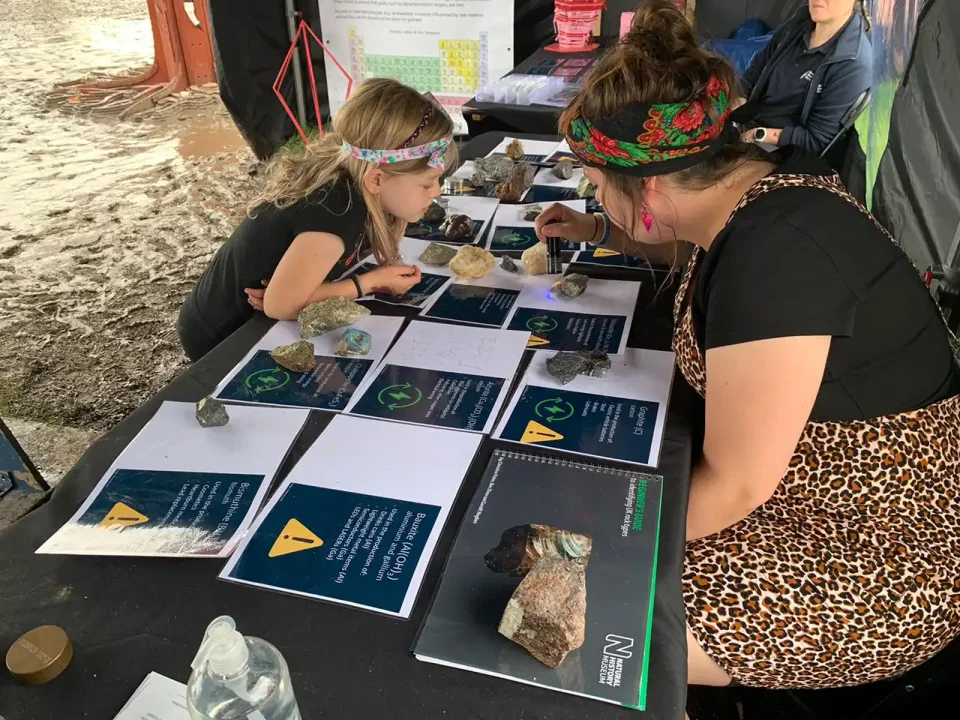
Public engagement manager Rose Want at the bluedot stand. BGS © UKRI.
Engaging members of the public in geology is a sometimes challenging but always rewarding task. Throughout the weekend, my approach to introducing people to our stand was ever changing so I could refine how I engaged with the public. I found that a lot of adults wanted to be taught something, whereas the children often wanted to show me what they knew about rocks and crystals. Whilst chatting to people of all ages was brilliant, engaging with kids to help foster their love for earth science was particularly rewarding.
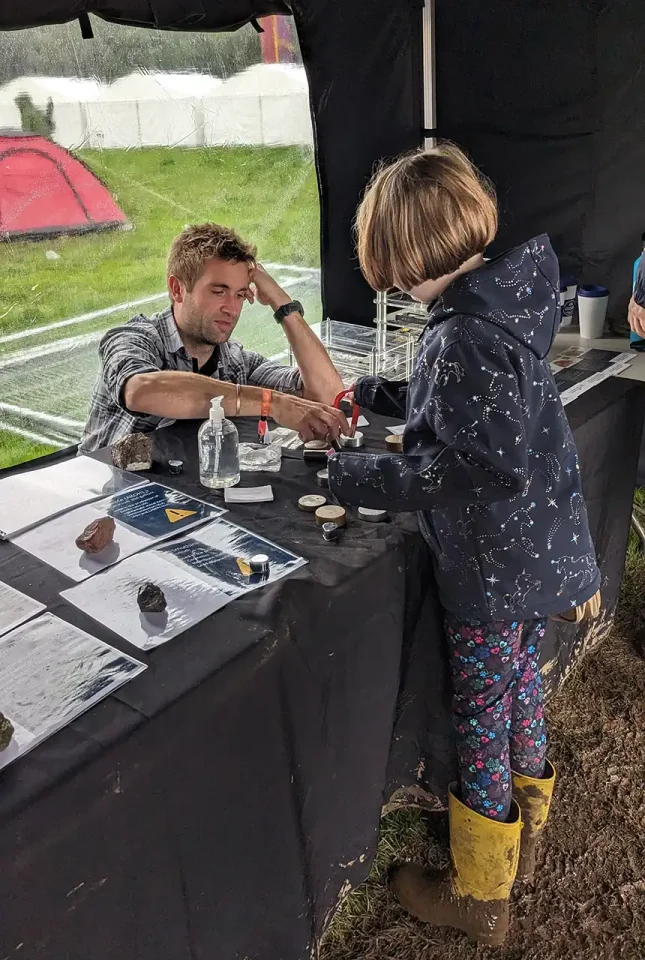
Hydrogeologist Jon MacKay interacting with the public at the bluedot stand. BGS © UKRI.
We had a variety of staff on the site, including someone with bright pink hair. One of the aims of public engagement is to show our audience that anyone can be involved with geology, no matter who they are. Our one stumbling block here is the aforementioned image problem and lack of diversity in our field. However, the more we chat to future geologists and show them that geologists can spend their time getting muddy, or hitting rocks, or climbing glaciers, the more we move towards a more open and accessible discipline. We’re also showing how relevant earth science is and how geology is absolutely essential to daily life. Don’t believe me? Time yourself for ten minutes and try not to use any mined materials (hint: plastic is one of them).
Public engagement is not only valuable for the public; it’s equally important for BGS staff members to get involved. Fostering love for your discipline with others is a valuable experience, but it’s equally important to pose a question to a member of the public and have them share their opinions with you — you never know what you might learn. One of our pieces at both Glastonbury and bluedot was an art installation reflecting views on potential lithium mining in the UK. We weren’t trying to shill for an answer but rather laid out both positive and negative facts that allowed festivalgoers to decide for themselves whether they wanted to vote pink (positive) or red (negative). The resulting artwork was only half of the point: the ability to allow our audience to think critically about the importance of mineral mining was the aim.No one is an island and this is true when covering such a vast topic as geology. We had a hydrogeologyist, a survey geologist and a public engagement officer with a degree in geology to answer any questions. For me as a communications manager, it was important to speak with other members of the team and learn their thoughts on communications and public outreach, and how we could improve our future output.
Team building
Finally, we can’t forget the team building aspect of public outreach events. We worked hard at bluedot this year, but the evening also gave us a chance to bond. When we faced removing a huge installation from a muddy quagmire at the end of the weekend, we had a foundation of team spirit that saw us band together to get the job done.
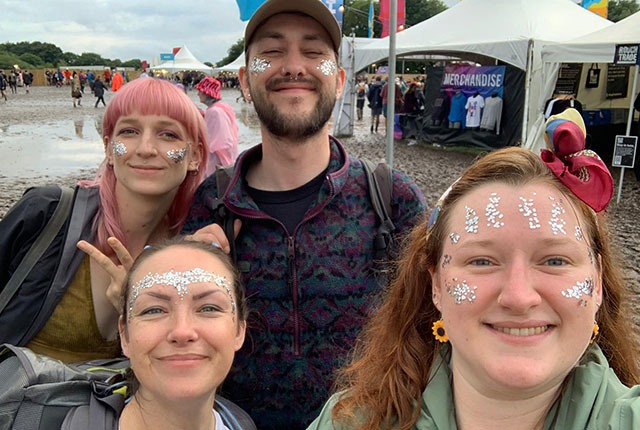
The team having some bonding time together. BGS © UKRI.
In a big organisation that covers various locations across the country, connecting with staff from other offices is important. bluedot was a wonderful, fun and at times challenging experience, but I’m so glad I got to take part with such a great team,whose passion for geology and learning managed to shine through the storm clouds of the weekend.
The future of public engagement
As the festival season draws to a close, BGS will continue its public engagement strategy with public engagement events around the UK. Our installation, ‘Clean Energy Beneath Our Feet’, is also touring the UK: it’s at the National Mining Museum Scotland at the time of writing (July 2023) and will make its way to Dynamic Earth in Edinburgh throughout October.
The final word
I’ll leave you with a quote from a child visiting the BGS tent, amid the music and the giant telescope, who picked up a hand lens and sighed, ‘Finally, life is interesting.’
Contact
If you have an event coming up and would like us to take part, please email the BGS public engagement team (bgsengage@bgs.ac.uk).
About the author
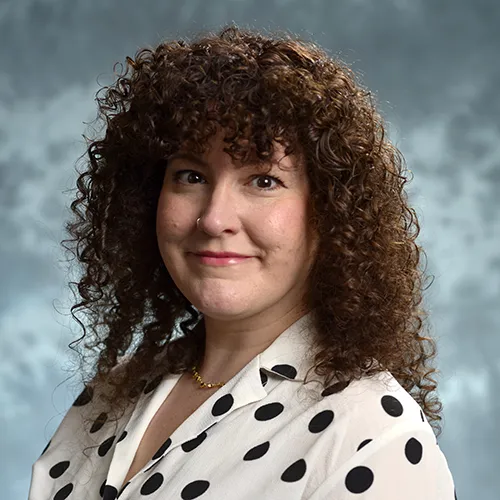
Penelope Reeve
Digital communications manager
Relative topics
Related news
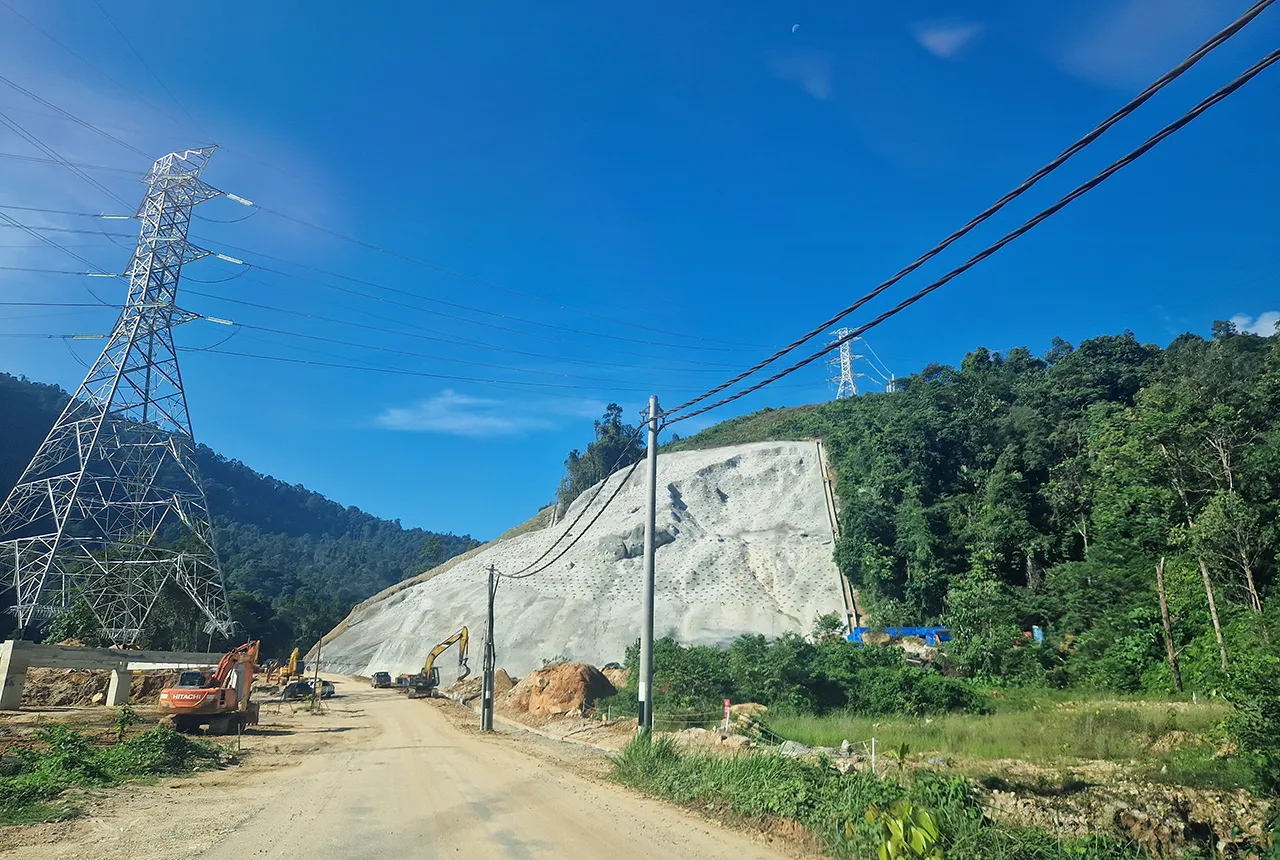
BGS awarded funding to support Malaysia’s climate resilience plan
17/12/2025
The project, funded by the Foreign, Commonwealth & Development Office, will focus on minimising economic and social impacts from rainfall-induced landslides.
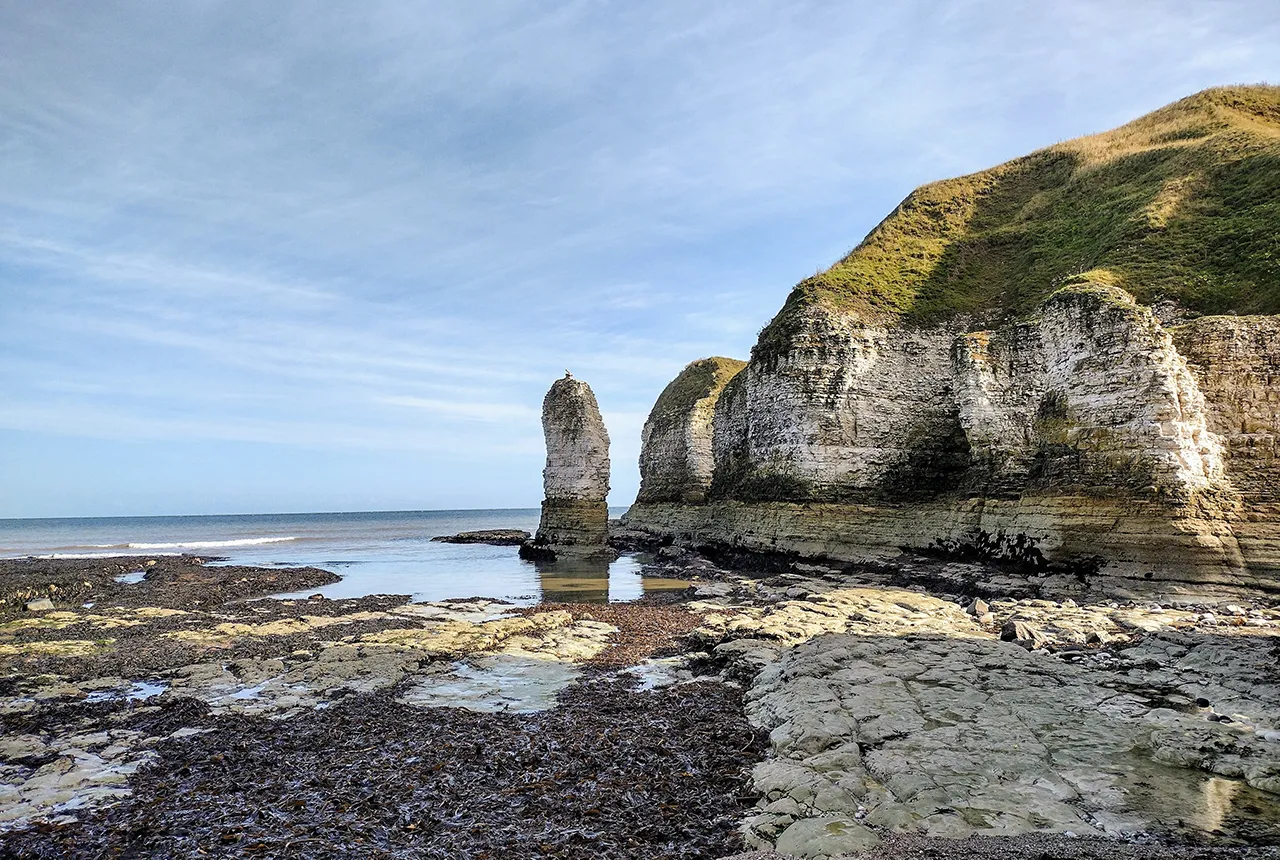
New geological maps of the Yorkshire Wolds to better inform groundwater management and policy decisions
17/12/2025
The new mapping provides crucial data on localised geological issues that may assist in protecting water supplies.
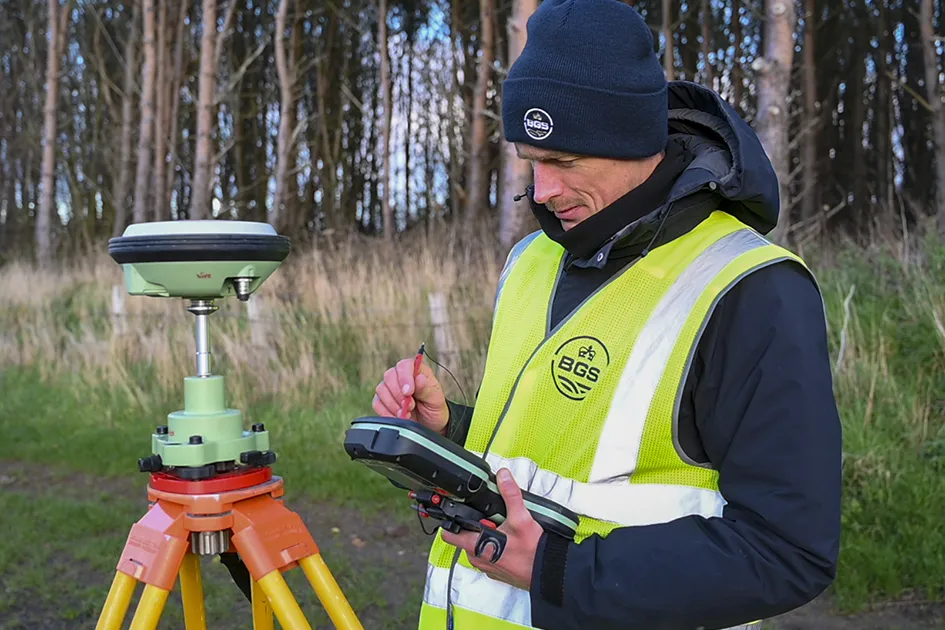
‘Three norths’ set to leave England and not return for hundreds of years
12/12/2025
The historic alignment of true, magnetic, and grid north is set to leave England, three years after they combined in the country for the first time since records began.
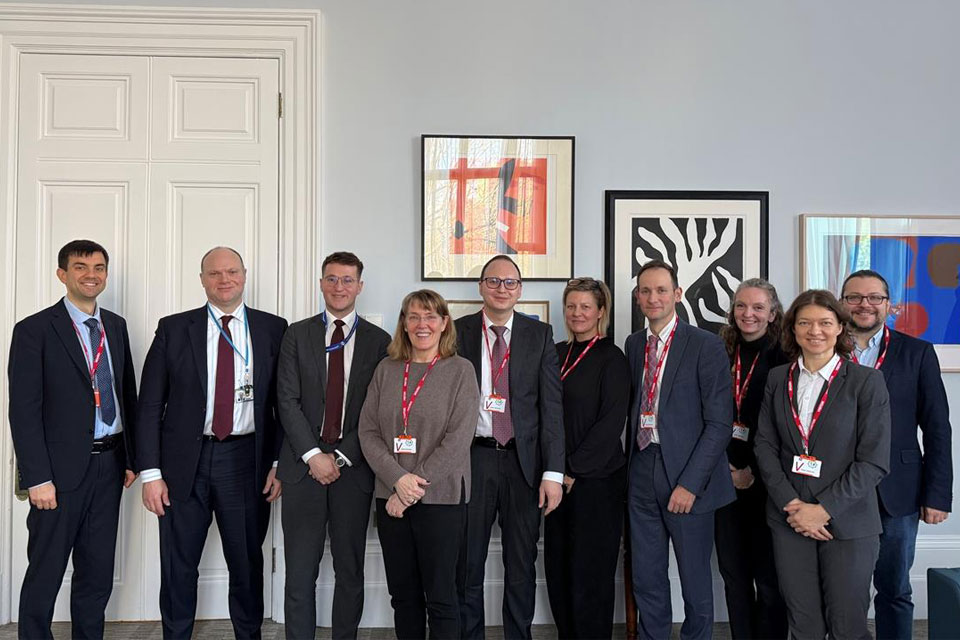
BGS agrees to establish collaboration framework with Ukrainian government
11/12/2025
The partnership will focus on joint research and data exchange opportunities with Ukrainian colleagues.
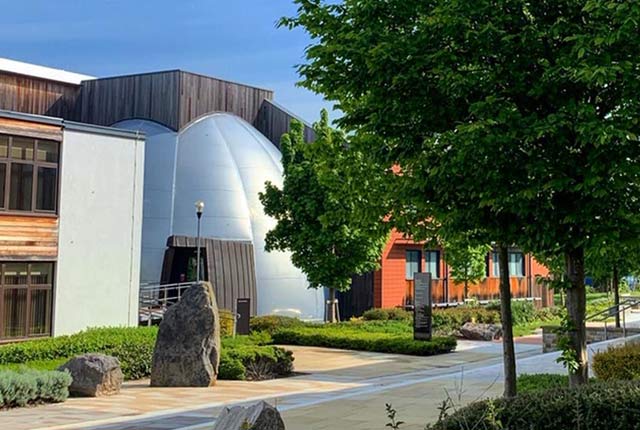
Making research matter: BGS joins leading research organisations in new national initiative
10/12/2025
A new alliance of 35 organisations has been formed that is dedicated to advancing science for the benefit of people, communities, the economy and national priorities.

New 3D model to help mitigate groundwater flooding
08/12/2025
BGS has released a 3D geological model of Gateshead to enhance understanding of groundwater and improve the response to flooding.
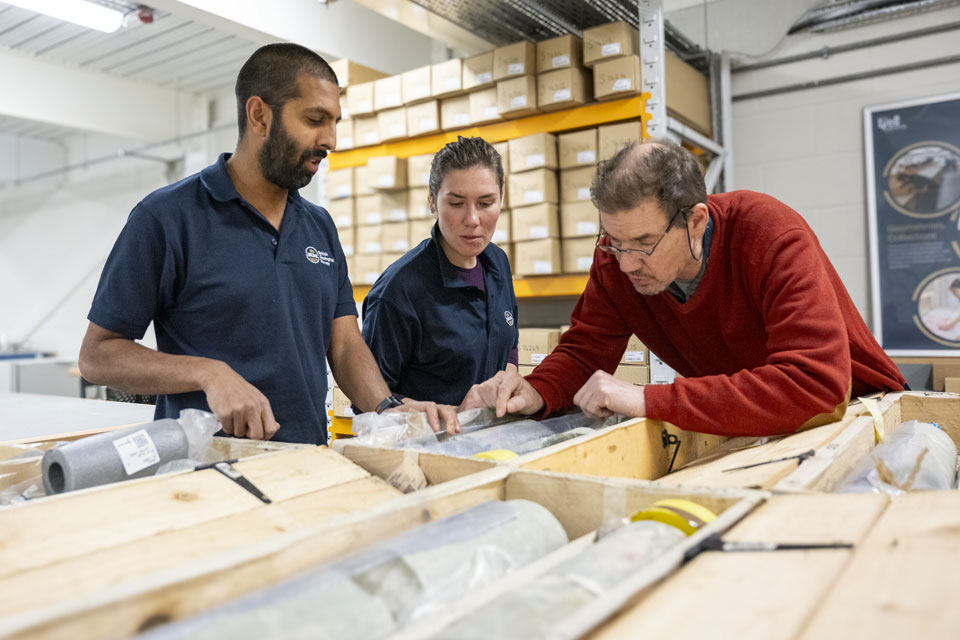
Scientists gain access to ‘once in a lifetime’ core from Great Glen Fault
01/12/2025
The geological core provides a cross-section through the UK’s largest fault zone, offering a rare insight into the formation of the Scottish Highlands.
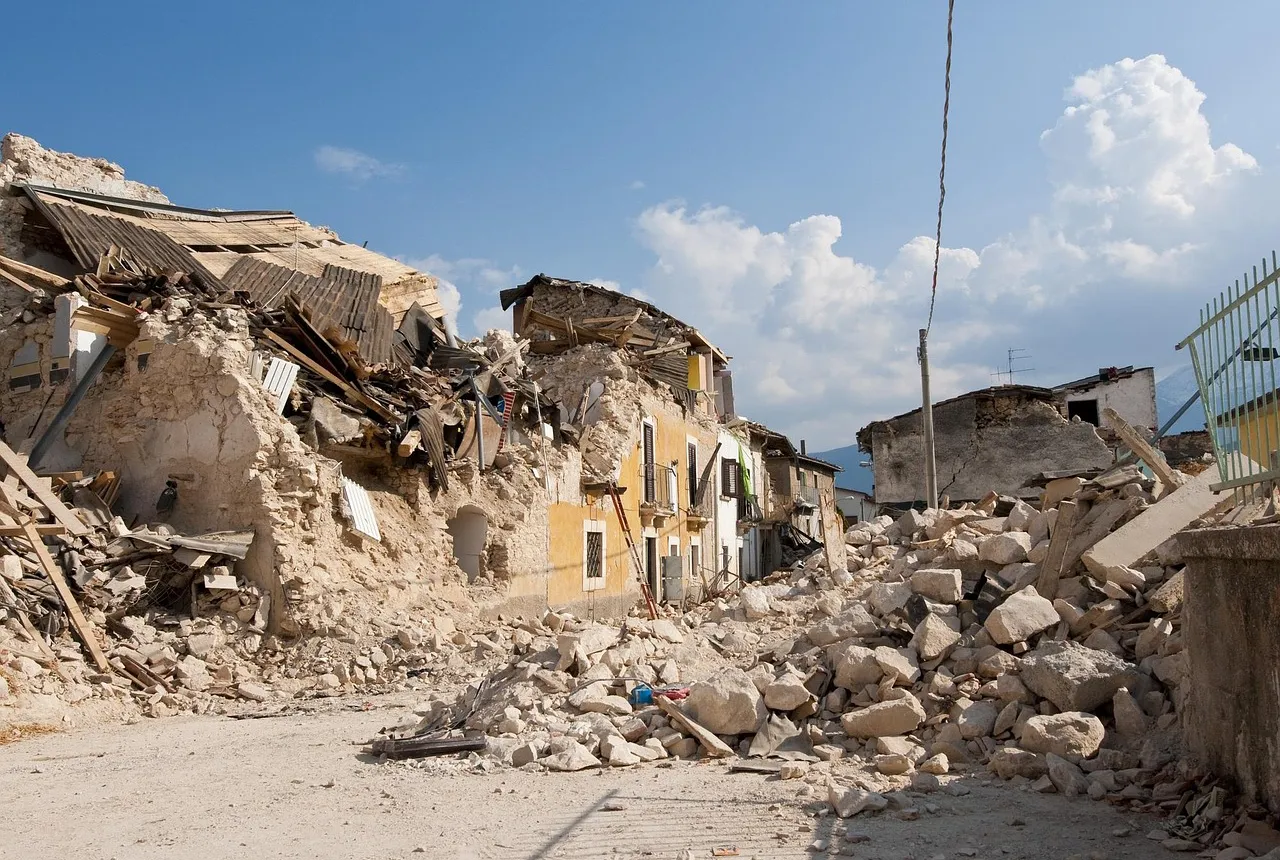
New research shows artificial intelligence earthquake tools forecast aftershock risk in seconds
25/11/2025
Researchers from BGS and the universities of Edinburgh and Padua created the forecasting tools, which were trained on real earthquakes around the world.
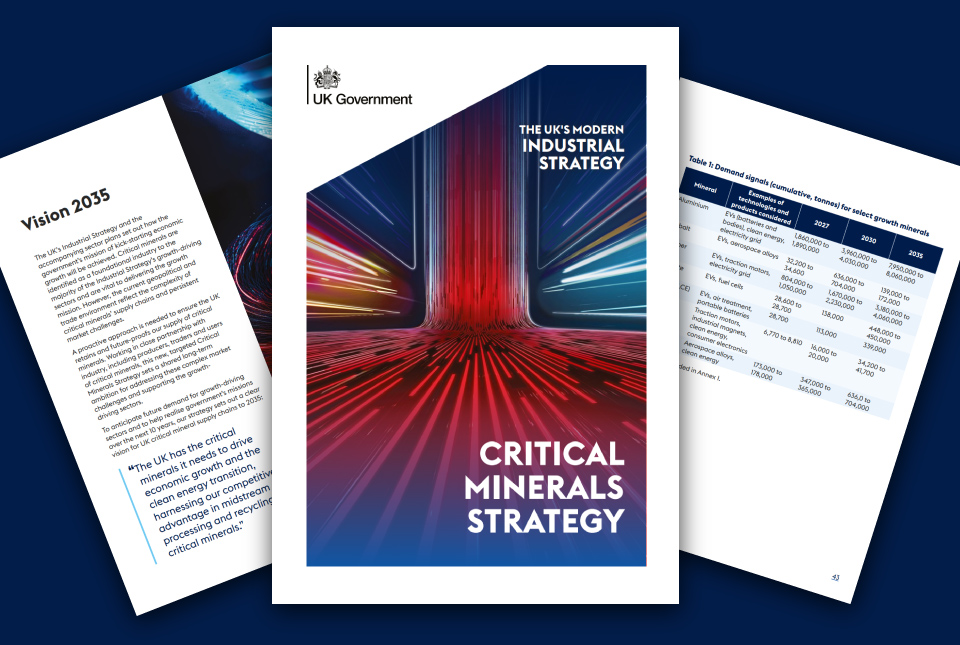
BGS welcomes publication of the UK Critical Minerals Strategy
23/11/2025
A clear strategic vision for the UK is crucial to secure the country’s long-term critical mineral supply chains and drive forward the Government’s economic growth agenda.
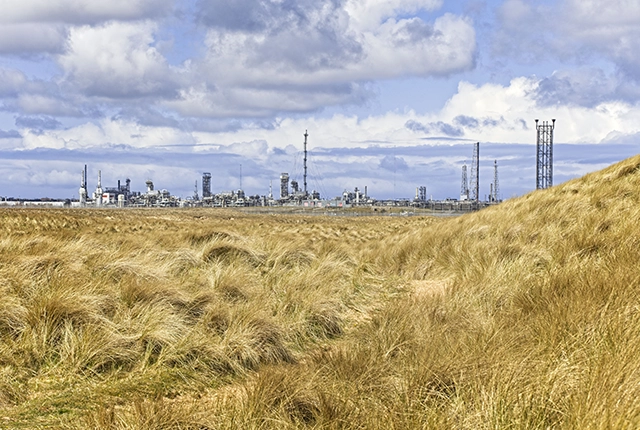
New funding awarded for UK geological storage research
21/11/2025
A project that aims to investigate the UK’s subsurface resource to support net zero has been awarded funding and is due to begin its research.
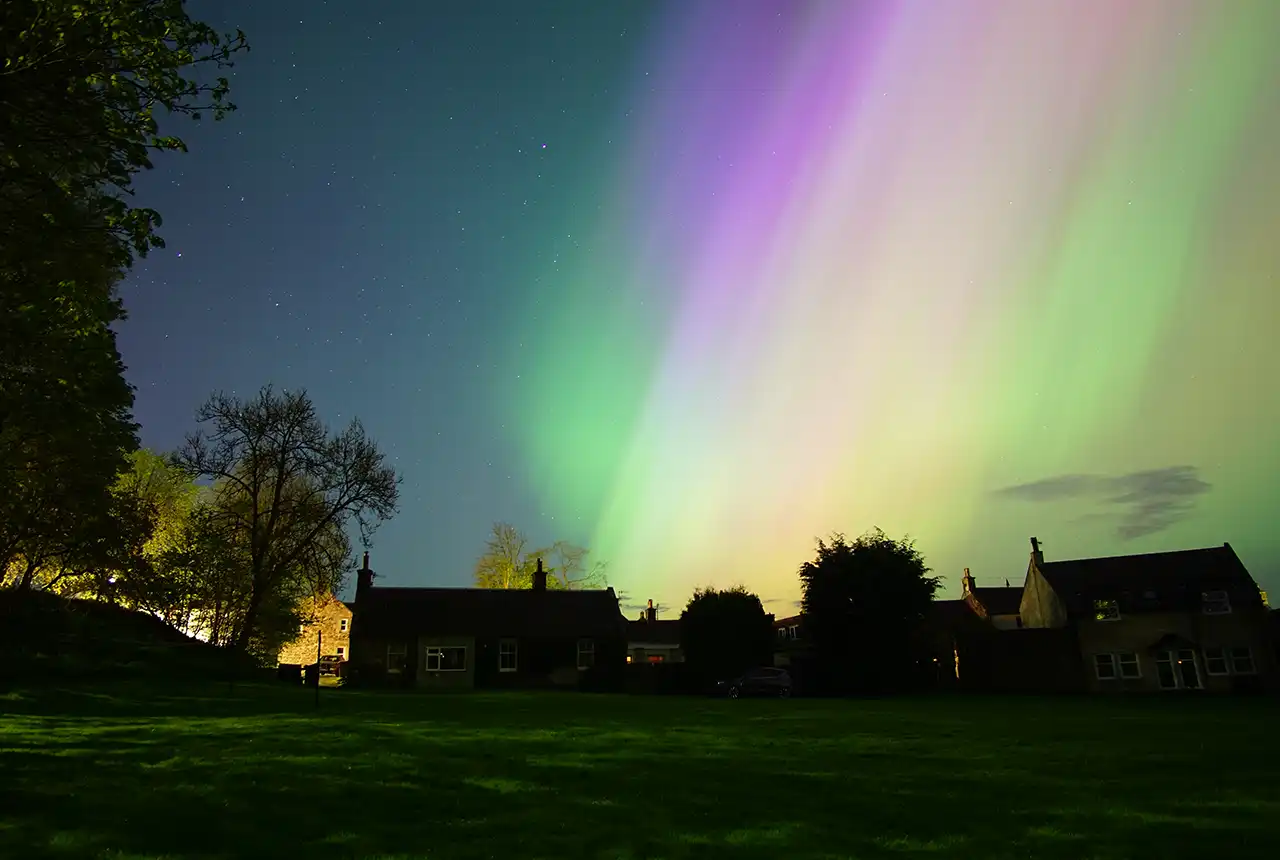
UK braced for what could be the largest solar storm in over two decades
12/11/2025
Intense geomagnetic activity could disrupt technology such as communication systems, global positioning systems and satellite orbits.

First distributed acoustic sensing survey completed at UK Geoenergy Observatory
12/11/2025
New research at the Cheshire Observatory has shown the potential for mapping thermal changes in the subsurface using sound waves.


